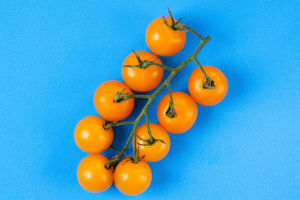Tanghulu is a traditional Chinese sweet snack, particularly cherished in the northern regions of the country.
Whether on cold winter streets or at bustling temple fairs, Tanghulu is a ubiquitous sight, evoking nostalgia and cultural significance for many generations.
The history of Tanghulu dates back to the Southern Song Dynasty. According to legend, a concubine of Emperor Song Guangzong fell gravely ill, and the imperial physicians were unable to cure her.
A folk doctor proposed a remedy: string hawthorns together, dip them in syrup, and have the concubine consume them daily. Remarkably, her condition improved. This event led to the gradual popularization of Tanghulu, transforming it into a beloved snack.
In ancient China, hawthorn was valued for its digestive benefits and its ability to alleviate stagnation and improve blood circulation. Thus, Tanghulu is not just a delightful treat but also carries some medicinal value.
Over time, Tanghulu has evolved in form and flavor, yet its fundamental preparation methods and ingredients have remained consistent.
The process of making Tanghulu is straightforward but requires skill. Traditionally, Tanghulu is made from hawthorn. Fresh hawthorns are de-cored, skewered onto bamboo sticks, and dipped in a layer of boiled maltose syrup.
The syrup must be heated to a specific temperature until it becomes thick and transparent, and then quickly applied to the surface of the hawthorn. Because the syrup solidifies quickly upon cooling, the timing and technique involved in making Tanghulu are crucial.
As times have changed, Tanghulu has diversified beyond hawthorn to include various fruits like strawberries, oranges, grapes, and bananas. Innovative versions featuring glutinous rice, bean paste, and other fillings have also emerged. Regardless of these variations, the classic sugary coating remains a defining characteristic of Tanghulu.
Candied haws are not only a traditional Chinese snack but also a symbol of many people's cherished childhood memories. In the past, Tanghulu was closely associated with traditional festivals such as the Spring Festival and temple fairs.
The sight of children playing in the streets with Tanghulu became a warm memory for many. Additionally, Tanghulu symbolizes family reunion and harmony.
Traditionally, hawthorn's moderate sweetness and sourness represent the highs and lows of life, while the sugary coating embodies hopeful expectations. Consequently, many families buy or make Tanghulu during festivals, wishing for familial harmony and a sweet new year.
Tanghulu has also featured prominently in Chinese literature, film, and television, serving as a cultural symbol that reflects deep-seated feelings for tradition and homeland.
For instance, in classic works like "Raise the Red Lantern," Tanghulu appears as a background element, adding a layer of sweetness and warmth to the narrative.
Despite its rich history and cultural significance, Tanghulu faces challenges in the modern era. Changes in dietary habits and an increased focus on health have raised concerns about the high sugar content of traditional Tanghulu.
Additionally, accelerated urbanization has led to the decline of many traditional snack stalls, impacting the production and sale of Tanghulu. However, Tanghulu has not vanished; instead, it has adapted to contemporary trends.
Many places are now integrating Tanghulu with modern art, creating innovative and uniquely shaped versions that appeal to younger generations. Furthermore, as Chinese culture spreads globally, Tanghulu has begun to appear on the international stage.
In overseas Chinatowns, Tanghulu serves as a cultural gateway for foreigners to explore and appreciate Chinese traditions. Whether as a culinary delight or a cultural emblem, Tanghulu continues to make a subtle impact worldwide.
Tanghulu, a sweet and culturally rich treat, reflects the evolution of Chinese history and societal development. It is more than just a flavor experience; it embodies beautiful memories and emotional connections across generations.
As time progresses and traditional culture is re-evaluated, Tanghulu is poised to be rejuvenated in the modern era, continuing to share its sweet and poignant story with the world.


